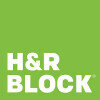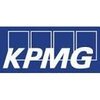Filter interviews by
Fidesto Projects Interview Questions, Process, and Tips
Fidesto Projects Interview Experiences
5 interviews found
I applied via Approached by Company and was interviewed before Apr 2021. There were 2 interview rounds.

(4 Questions)
- Q1. Specifications of material which used for building construction?
- Ans.
Materials used in building construction include concrete, steel, wood, brick, and stone.
Concrete is used for foundations, walls, and floors.
Steel is used for structural support and framing.
Wood is used for framing, flooring, and finishing.
Brick is used for walls and facades.
Stone is used for walls, flooring, and decorative features.
- Q2. What is difference in execution and work planning?
- Ans.
Execution is the implementation of work planning. Work planning is the process of creating a plan to achieve a goal.
Execution involves carrying out the tasks outlined in the work plan
Work planning involves identifying the steps needed to achieve a goal
Execution requires following the timeline and budget set in the work plan
Work planning involves considering resources, constraints, and potential obstacles
Example: Work p...
- Q3. What MS stucture rate per 1 SQM?
- Ans.
The MS structure rate per 1 SQM varies depending on the type of structure and location.
The rate can range from $50 to $200 per SQM.
Factors that affect the rate include the type of material used, labor costs, and location.
For example, the rate for a steel structure in a rural area may be lower than that of a concrete structure in a city.
It is important to get a detailed quote from a contractor before starting any constr
- Q4. What is rate analysis ?
- Ans.
Rate analysis is the process of determining the rates of various items of work in a construction project.
It involves breaking down the cost of a project into individual components.
It helps in estimating the cost of a project accurately.
It takes into account factors such as materials, labor, equipment, and overhead costs.
For example, rate analysis can be used to determine the cost of laying a foundation, including the c...
Interview Preparation Tips
Be perpair for execution with solid Planning and check it prectcal on the site.
Assistant Manager Interview Questions asked at other Companies
Introduce about yourself and about your achievements
(4 Questions)
- Q1. Estimate & costing
- Q2. Bar bending schedule
- Q3. Steel structure
- Q4. Indian standard codes
Interview Preparation Tips
Project Engineer Interview Questions asked at other Companies
I applied via Naukri.com and was interviewed in Oct 2023. There were 3 interview rounds.

(3 Questions)
- Q1. What is size of concrete cube
- Ans.
The size of a concrete cube is typically 150mm x 150mm x 150mm.
Standard size for concrete cube is 150mm x 150mm x 150mm
Used for testing the compressive strength of concrete
Cubes are cast and cured for a specified period before testing
- Q2. What is accuracy of dumpy level or minimum reading we can take
- Ans.
The accuracy of a dumpy level is typically around 1/100th of a foot or 2mm.
The minimum reading that can be taken with a dumpy level is usually around 1/100th of a foot or 2mm.
This level of accuracy is sufficient for most construction and surveying tasks.
Higher quality dumpy levels may have even greater accuracy, down to 1/1000th of a foot or less.
- Q3. What is expiry date of cement
- Ans.
The expiry date of cement is typically around 3 months to 1 year from the date of manufacture.
Cement typically has a shelf life of 3 months to 1 year from the date of manufacture.
The expiry date can vary depending on the type of cement and storage conditions.
It is important to check the packaging for the specific expiry date of the cement.
Using expired cement can lead to weaker concrete and construction issues.
(2 Questions)
- Q1. What do you do if concrete becomes to hard before placing? Do you add extra water
- Ans.
No, adding extra water to hardened concrete will weaken the structure and compromise its integrity.
Do not add extra water to hardened concrete as it will weaken the structure
Consult with a supervisor or engineer for guidance on how to proceed
Consider using additives or accelerators to help with placement if necessary
- Q2. What is the expiry date of cement
- Ans.
The expiry date of cement is typically around 3 months to 6 months from the date of manufacture.
Cement typically has an expiry date of 3 to 6 months from the date of manufacture.
The expiry date is important as older cement may not set properly or provide the desired strength.
Factors such as storage conditions and moisture levels can affect the expiry date of cement.
Site Engineer Interview Questions asked at other Companies

(2 Questions)
- Q1. General information about self
- Q2. General knowledge about coordinator
Interview Preparation Tips
Senior Officer Interview Questions asked at other Companies
Fidesto Projects interview questions for popular designations

(3 Questions)
- Q1. What is the procedure for water proofing?
- Ans.
Waterproofing procedure involves surface preparation, application of waterproofing material and quality control measures.
Surface preparation involves cleaning and repairing the surface to be waterproofed.
Waterproofing material can be applied using various methods such as spraying, brushing or rolling.
Quality control measures include checking for leaks and ensuring proper curing of the waterproofing material.
Different t...
- Q2. What are types of vitrified tile?
- Ans.
Vitrified tiles are of two types - soluble salt and double charge.
Soluble salt vitrified tiles have a pattern that is printed on the surface of the tile and then coated with a layer of liquid glass.
Double charge vitrified tiles have two layers of pigment that are baked together to create a pattern that goes all the way through the tile.
Other types of vitrified tiles include glazed vitrified tiles, full-body vitrified t
- Q3. What challenges you faced as an site engineer?
Interview Preparation Tips
Senior Site Engineer Interview Questions asked at other Companies
Top trending discussions






Interview questions from similar companies

I applied via Referral
Interview Questionnaire
1 Question
- Q1. Tell me about yourself.
Interview Preparation Tips

Senior Associate Interview Questions & Answers
Escalon Business Servicesposted on 9 Mar 2021
I applied via Naukri.com and was interviewed in Feb 2021. There was 1 interview round.
Interview Questionnaire
1 Question
- Q1. Accouting concepts Accural Accouting, Depreciation, B/Sheet, P&Loss

I applied via Company Website and was interviewed in May 2021. There were 4 interview rounds.
Interview Questionnaire
2 Questions
- Q1. Regarding tax
- Q2. Self intro
Interview Preparation Tips

I applied via Indeed and was interviewed in Mar 2021. There were 5 interview rounds.
Interview Questionnaire
1 Question
- Q1. Basics of Accounting, starting from book keeping to financial statement analysis and bank reconciliations
Interview Preparation Tips

I applied via Campus Placement
Basic questions related to time, distance etc. speed is the most important part for this.
Normal group discussion based on a particular topic
(1 Question)
- Q1. They will test your basic knowledge in programming language and some coding
(1 Question)
- Q1. Behavioural questions
Fidesto Projects Interview FAQs
Tell us how to improve this page.
Fidesto Projects Interviews By Designations
Interview Questions for Popular Designations
Fidesto Projects Interview Process
based on 4 interviews
Interview experience
Interview Questions from Similar Companies
Fidesto Projects Reviews and Ratings
based on 60 reviews
Rating in categories
|
Project Engineer
30
salaries
| ₹2.5 L/yr - ₹4.2 L/yr |
|
Project Manager
18
salaries
| ₹8 L/yr - ₹14 L/yr |
|
Senior Engineer
10
salaries
| ₹4.4 L/yr - ₹6 L/yr |
|
Assistant Manager
7
salaries
| ₹5.4 L/yr - ₹7 L/yr |
|
Safety Officer
7
salaries
| ₹3.6 L/yr - ₹5.8 L/yr |

RSM India

Ryan

NAV Backoffice

Bluechip Corporate Investment Centre
- Home >
- Interviews >
- Fidesto Projects Interview Questions










